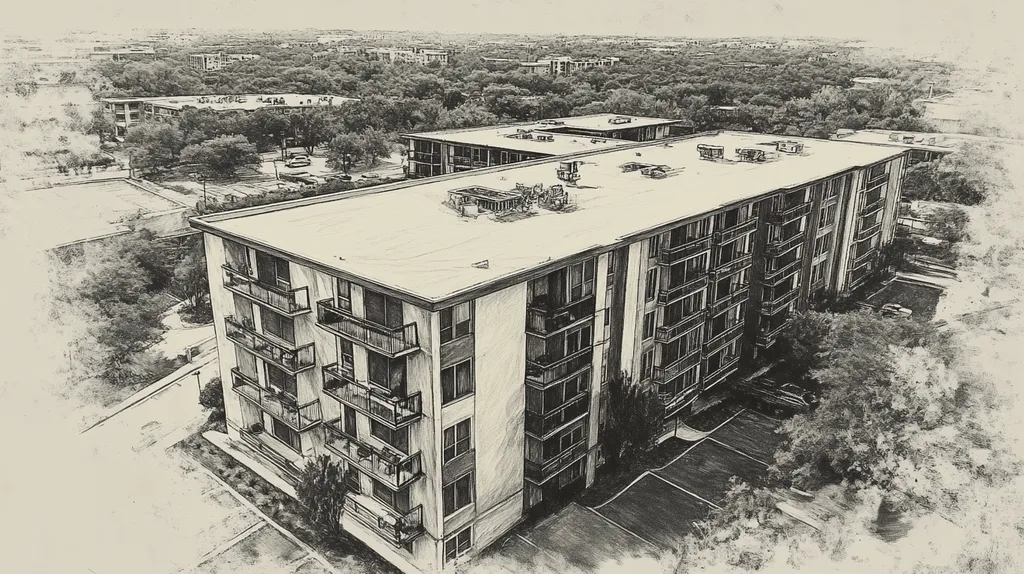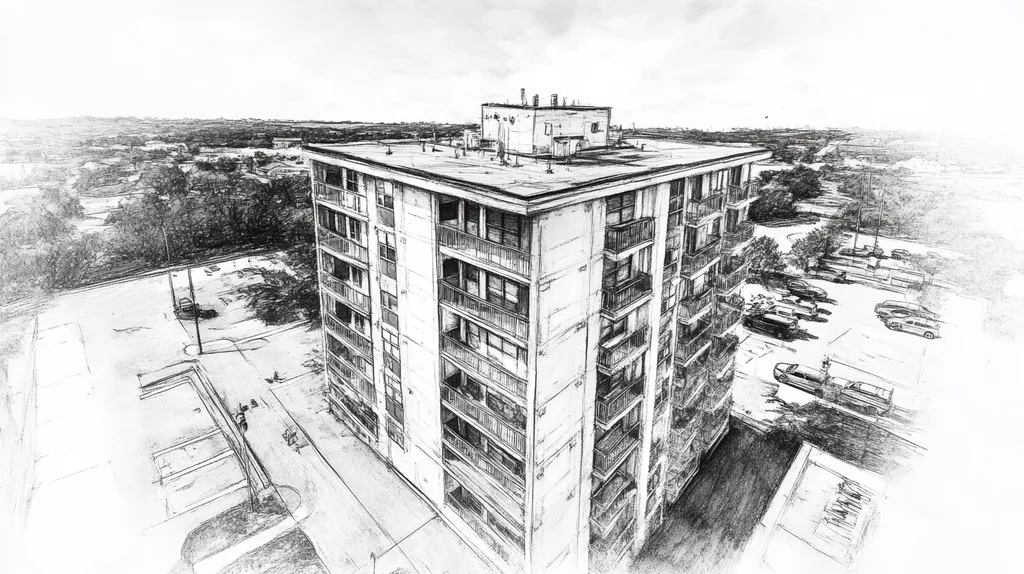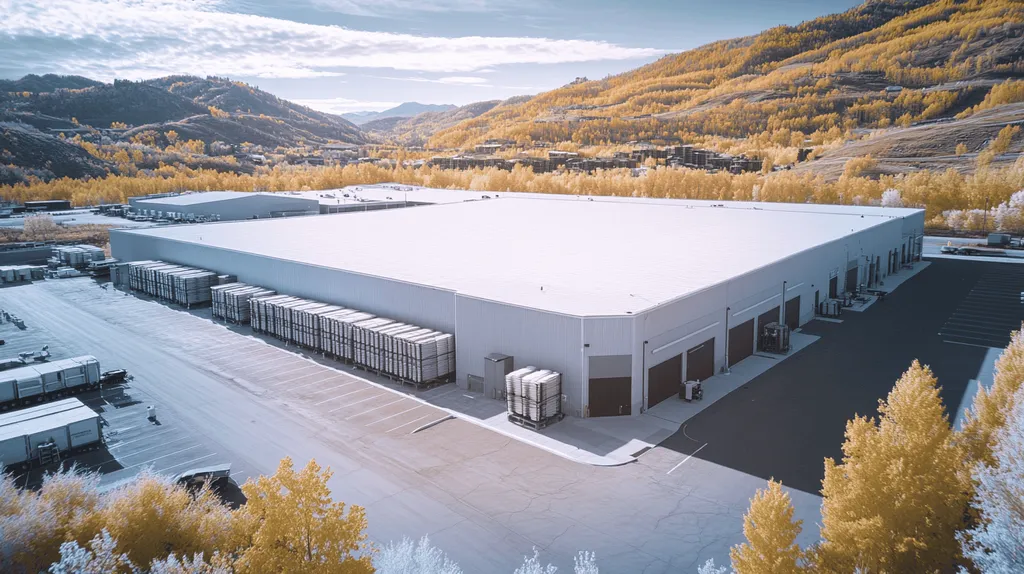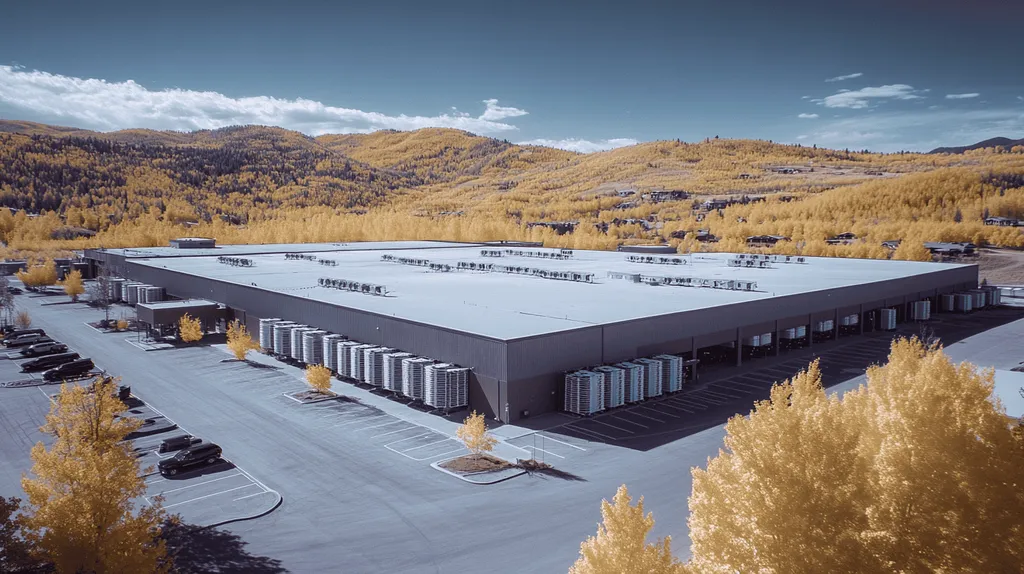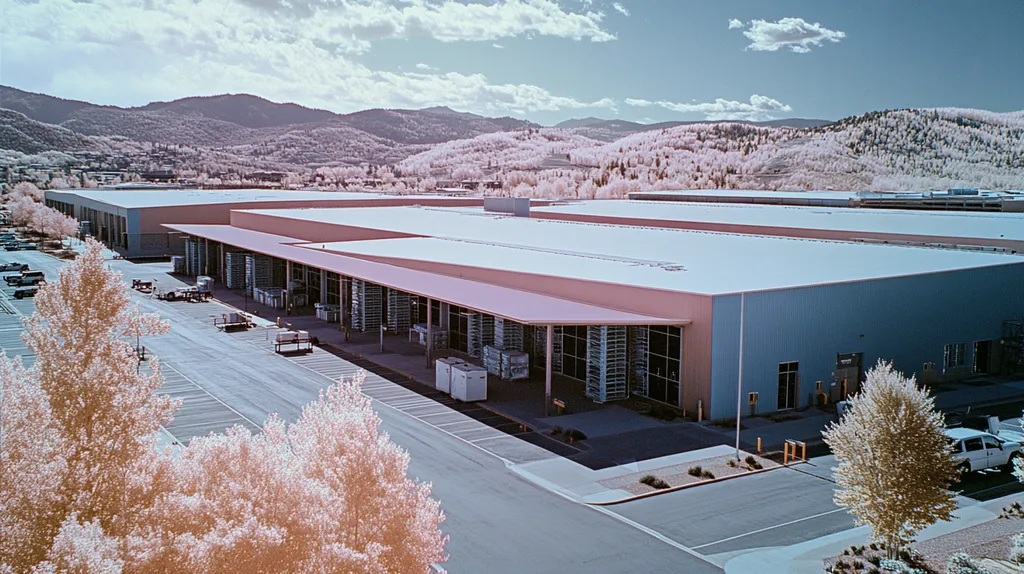Every year, commercial property owners lose millions to preventable roof damage, yet 80% of roofs are replaced prematurely due to maintenance myths and misinformation. From mysterious leaks playing hide-and-seek with inspectors to warranty-voiding mistakes that could have been avoided, the cost of roofing folklore is skyrocketing.
Think your roof is indestructible? That “minor” problem you’re ignoring today could be plotting a six-figure ambush on tomorrow’s budget.
Let’s separate roofing facts from fiction and explore why what you don’t know about your commercial roof could be your building’s biggest threat – and your wallet’s worst enemy.
SECTION 1: COMMON MISCONCEPTIONS
Think your commercial roof is just hanging out up there, minding its own business? Think again! Every day, it’s battling UV rays, chemical fallout, and temperature swings that would make a weather forecaster dizzy. Yet surprisingly, many property managers cling to roofing myths that can cost them dearly. Did you know that a typical commercial roof encounters over 1,460 heating-cooling cycles each year? Let’s bust some myths that might be putting your roof – and budget – at risk.
Myth: Roof Inspections Aren’t Necessary for Flat Roofs
Picture your flat roof as a swimming pool that never quite drains properly. While it may look serene from below, it’s actually engaging in a constant battle against standing water, debris, and sneaky leaks that love to play hide-and-seek.
Those seemingly harmless puddles? They’re actually tiny weight-training camps for your roof, potentially adding thousands of pounds of stress to your building’s structure. Just one inch of water on a 1,000-square-foot area weighs nearly 5,200 pounds!
Think you’ll spot problems from ground level? That’s like trying to find a paper cut while wearing mittens. Small issues can multiply faster than rabbits in springtime, turning minor repairs into major headaches.
Plus, many warranty programs demand regular inspections – skip them, and you might as well be tossing your warranty in that rooftop puddle we mentioned earlier.
Misbelief: New Roofs Don’t Require Maintenance
Would you buy a new car and never change its oil? Your shiny new roof needs just as much TLC. Even the most advanced roofing systems can develop first-year hiccups that, if ignored, turn into sophomore-year symphonies of chaos.
Those pristine drains and flashings? They’re magnets for construction debris, leaves, and whatever else the wind decides to deposit. Without regular check-ups, they can clog faster than a cafeteria sink during lunch rush.
Weather doesn’t care about warranty dates either. From Day One, your roof faces thermal shock, UV exposure, and freeze-thaw cycles that can stress even the toughest materials.
Remember: prevention costs pennies compared to emergency repairs. A simple maintenance program can extend your roof’s life by 25% or more.
False Assumption: All Commercial Roofs Are the Same
Claiming all commercial roofs are identical is like saying all vehicles are the same because they have wheels. Different roofing materials vary significantly in durability, energy efficiency, and maintenance needs. (source: The Duerson Corporation)
Each roofing system has its own personality quirks. Single-ply membranes might be perfect for your retail space, while your neighbor’s manufacturing facility requires a heavy-duty built-up system with extra chemical resistance.
Climate plays favorites too. A roof that thrives in Arizona’s dry heat might throw a tantrum in Seattle’s constant drizzle. Your building’s height, usage, and even neighboring structures all influence which roofing system will perform best.
Treating all roofs as carbon copies can lead to maintenance mishaps that turn your warranty into confetti. Understanding your specific roof type is like having the owner’s manual for success.
SECTION 2: PRACTICAL IMPLICATIONS
Think your commercial roof is indestructible? Every day it’s playing a high-stakes game of environmental roulette, and skipping maintenance is like betting your building’s future on a bad hand. Studies show that for every $1 saved by postponing roof maintenance, building owners spend an average of $4 on future repairs. Let’s explore why playing roof roulette is a game you can’t afford to win.
Impact of Skipping Regular Roof Inspections
Your roof is like a silent superhero, battling the elements 24/7. But even superheroes need check-ups. Hidden damage can lurk beneath that seemingly solid surface, plotting its sneak attack on your building’s defenses.
Those innocent-looking seams and flashings? They’re actually your roof’s Achilles’ heel, where water and weather wage their sneakiest campaigns. Just because you can’t see the battle doesn’t mean it isn’t happening.
Remember that fancy warranty you got with your roof? Skip the inspections, and it might as well be written in disappearing ink. Most manufacturers require regular check-ups to keep that coverage valid.
Think of your roof inspector as a fortune teller who actually knows what they’re talking about. They can spot tomorrow’s catastrophes in today’s tiny details, saving you from budget-busting surprises.
Consequences of Ignoring Minor Roof Damage
Ever heard the saying “for want of a nail, the kingdom was lost”? In roofing terms, that tiny blister or mysterious dark spot you’re ignoring could be plotting a full-scale invasion of your building’s integrity. Roofs can deteriorate internally, with damage lurking beneath the surface like a stealth operative.
Water is your roof’s arch-nemesis, and it’s sneakier than you’d think. That pinhole leak you can’t be bothered to fix? It’s secretly recruiting moisture allies, staging a structural coup that could turn your minor repair into a major replacement. (source: Farha Roofing)
Those mysterious dark spots on your ceiling? They’re like weather forecasters announcing a storm – except this storm is happening inside your building. By the time you see them, the damage party has been raging for weeks.
The real kicker? Minor repairs typically cost about 1% of what you’ll spend on major damage control. That’s like choosing between buying a coffee or a new car – except this coffee prevents you from needing that new car.
Importance of Selecting Qualified Roofing Contractors
Picking a roofing contractor isn’t like choosing a pizza topping – you can’t just go with your gut. The wrong choice can turn your roof maintenance program into a horror story starring your budget in the victim role.
Those bargain-basement bids? They’re often hiding more red flags than a maritime warning system. Quality contractors invest in proper training, insurance, and equipment – and yes, that costs more than a fly-by-night operation.
True professionals don’t just fix what’s broken; they’re like roof whisperers, reading the signs of future problems in today’s minor symptoms. They know which small fixes prevent big disasters.
Think certification papers are just fancy wall decorations? Think again. They’re your guarantee that your contractor knows the difference between a proper repair and a Band-Aid solution that’ll fail faster than a chocolate teapot.
Remember: a qualified contractor might cost more upfront, but they’re cheaper than fixing someone else’s mistakes. It’s like that old mechanic’s joke – if you think a professional is expensive, wait until you hire an amateur.
SECTION 3: COST OF MISINFORMATION
Think your commercial roof is just a boring expense on your balance sheet? Think again! Every missed inspection or delayed repair is like watching money float away on the breeze – except this breeze comes with a hurricane-sized price tag. When it comes to roofing, what you don’t know can definitely hurt your bottom line, and the bills can stack up faster than autumn leaves on a flat roof.
Financial Risks of Delayed Roof Repair
Playing chicken with roof repairs is like gambling with Mother Nature – and she always wins. That tiny leak you’re ignoring? It’s secretly planning a hostile takeover of your building’s structural integrity, one drip at a time.
Water damage is the ninja of building problems – silent, sneaky, and surprisingly destructive. By the time you notice that innocent-looking water stain on your ceiling, the real party’s been raging in your roof deck for weeks.
The numbers tell a shocking story: what starts as a $500 repair can balloon into a $50,000 nightmare faster than you can say “mold remediation.” And that’s not counting the potential hit to your property value.
Want a real horror story? Consider the domino effect: one leaky spot can trigger structural damage, inventory losses, slip-and-fall liability, and enough paperwork to wallpaper your entire building.
Expenses from Improper Roof Installation Practices
Bargain-hunting for roof installation is like trying to save money on parachutes – the risks far outweigh any potential savings. Those tempting low-ball bids often come with hidden costs that’ll have your accountant reaching for the antacids.
Ever tried to fix someone else’s mistake? It’s like trying to solve a puzzle with half the pieces missing. Poor installation practices create problems that compound faster than credit card interest.
Think that warranty will save you? Think again! Many manufacturers take one look at an improperly installed roof and say “not our problem” faster than you can say “voided coverage.”
The real kicker? Fixing installation mistakes often costs three times more than doing it right the first time. It’s like paying for three meals but only getting to eat one – and it’s not even the good one.
Long-Term Cost of Neglecting Routine Maintenance
Regular maintenance isn’t just another expense – it’s your roof’s retirement plan. No matter the size or makeup of your roof, catching small problems before they become major headaches is like having a crystal ball for your building’s future. (source: Castagra Products, Inc.)
Consider this: a well-maintained roof can last 20-30 years, while a neglected one might wave the white flag at 10. That’s like throwing away half your roof’s lifespan – and the replacement budget that goes with it.
Energy costs love a neglected roof more than pigeons do. As your roof’s performance declines, your HVAC system works harder than a caffeinated hamster on a wheel, sending your utility bills through the (leaky) roof.
The math is simple: preventive maintenance typically costs about 14 cents per square foot annually. Emergency repairs? They can run you $4-5 per square foot – and that’s if you’re lucky.
Think of maintenance like your roof’s gym membership – regular workouts keep it strong and prevent expensive health problems down the road. Skip the routine check-ups, and you’re setting yourself up for a financial heart attack.
SECTION 4: REALITY CHECK
Your commercial roof isn’t just hanging out up there working on its tan – it’s your building’s bouncer, keeping out everything from acid rain to UV rays that would love to crash your business party. But here’s the shocker: most roofs fail not from age, but from neglect. It’s like having a superhero guardian who needs an occasional power-up to keep fighting the good fight. Let’s get real about what your roof needs to keep your business safe and dry.
What Constitutes a Thorough Roof Inspection?
Think your roof inspection is just a casual stroll with a clipboard? Think again! A proper inspection is more like a CSI investigation, where every seam tells a story and every bubble holds a clue.
Your inspector should be checking more layers than an overdressed penguin. That means examining the membrane, flashings, drains, and even that suspicious-looking patch where the pigeons hold their weekly meetings.
Modern tools make old-school visual inspections look like using a magnifying glass to find a needle in a haystack. Infrared scanners can spot sneaky leaks hiding beneath the surface, while moisture meters reveal secrets your eyes would never catch.
Documentation matters more than you’d think. A good inspector creates a paper trail that would make a detective proud, complete with photos, measurements, and enough detail to track problems over time.
How Weather Events Affect Commercial Roofs
Your roof isn’t just battling the occasional raindrop – it’s in a constant WWE match with Mother Nature herself. One day it’s baking in UV rays hot enough to fry an egg, the next it’s playing ping-pong with hailstones.
Those peaceful-looking snow drifts? They’re actually wearing your roof down like sandpaper on wood. Just one foot of wet snow on a 1,000-square-foot section can weigh as much as five elephants having a rooftop party.
Wind doesn’t just blow across your roof – it’s trying to turn it into a sail. Those uplift forces can be strong enough to make your membrane flap like a flag in a hurricane, especially around the edges and corners.
Temperature swings are your roof’s worst nightmare. When materials expand and contract like an accordion, even the toughest seams can start playing hide-and-seek with your building’s interior.
True Lifespan Expectations for Common Roof Types
Think all commercial roofs live to the ripe old age of 30? That’s like expecting every car to hit 300,000 miles without an oil change. Regular maintenance is crucial for maximizing your roof’s lifespan and preventing costly damage – just like those regular car tune-ups that keep your vehicle purring. (source: Grizzly Roofing)
Single-ply membranes like TPO might tap out at 20 years, while built-up roofing systems could soldier on for 30+ years. But these numbers come with more asterisks than a Hollywood contract.
Climate plays favorites with different materials. A roof that might last 25 years in Arizona could retire early in Florida’s humid hurricane parties. Local weather conditions can cut years off even the toughest roof’s life expectancy.
Installation quality is the secret sauce in the lifespan recipe. A perfectly installed economy roof will outlast a poorly installed premium system faster than you can say “warranty void.”
SECTION 5: EVIDENCE-BASED ALTERNATIVES
Think your roof is just playing hide and seek with the weather? It’s actually engaging in an Olympic-level competition against the elements every single day! While most property managers are still using yesterday’s maintenance playbook, smart building owners are discovering that evidence-based approaches can slash repair costs by up to 40%. Ready to transform your roof from a constant worry into your building’s MVP (Most Valuable Protector)?
Scheduling Biannual Inspections for Early Problem Detection
Your roof is like a championship athlete – it needs regular check-ups to stay in peak condition. Those seemingly minor aches and pains? They’re actually early warning signals that could save you from a season-ending injury to your budget.
Think of spring inspections as your roof’s post-winter physical, checking for damage from ice dams, thermal shock, and those charming freeze-thaw cycles that love to test your roof’s resilience.
Fall inspections are your pre-winter prep rally, ensuring drainage systems are clear and seams are ready to face whatever Mother Nature has planned for the holiday season.
The National Roofing Contractor’s Association recommends inspecting commercial roofs in spring and fall, noting that maintenance contracts typically cost less than the savings they generate. (source: Castagra Products, Inc.)
Best Practices for Proactive Roof Maintenance
Welcome to your roof’s wellness program! Just like a health-conscious diet prevents medical emergencies, proactive maintenance prevents roofing catastrophes. Start with a thorough cleaning routine that would make a neat freak proud.
Those innocent-looking leaves and debris? They’re actually plotting to turn your drainage system into their personal vacation home. Regular cleaning keeps water flowing where it should – away from your building.
Temperature changes make your roof do more stretching than a yoga instructor. Maintain proper insulation and ventilation to prevent these thermal gymnastics from causing splits and cracks.
Document everything like a detective at a crime scene. Today’s minor scratch could be tomorrow’s smoking gun when tracking down the source of a leak.
Choosing Certified Roofers and Verified Inspection Methods
Picking a roofing inspector is like choosing a doctor – you want someone with the right tools, training, and bedside manner. Modern inspection technology has turned roof diagnosis from guesswork into science.
Those fancy infrared cameras aren’t just for show – they’re like X-ray vision for your roof, spotting hidden moisture issues before they turn into indoor waterfalls.
Certification isn’t just a piece of paper – it’s your insurance policy against the “I thought that looked fine” school of roof inspection. Professional inspectors bring more tools to the job than Batman’s utility belt.
When your inspector shows up with moisture meters, core sampling equipment, and enough diagnostic gear to fill a small van, you know you’re getting more than just a casual rooftop stroll.
SECTION 6: TEST AND VERIFY
Think your roof is playing hide and seek with problems? It’s more like a master of disguise, concealing issues that could turn your budget into confetti! While a casual walk-around might spot obvious damage, hidden threats are staging a stealth invasion of your roofing system. Your roof is basically running a 24/7 game show called “Find the Leak” – and the stakes are higher than a skyscraper.
Techniques for Detecting Hidden Roof Damage
Your roof is like an iceberg – what you see is just the tip of potential problems. Roof damage can be sneakier than a cat burglar, deteriorating from the inside out while maintaining a poker face on the surface.
Those mysterious bumps and blisters? They’re like treasure maps leading to hidden problems. But instead of X marking the spot, you need special tools to decode their secrets.
Think electronic leak detection is overkill? It’s actually like giving your inspector superhero powers, allowing them to spot villainous leaks that visual inspections miss.
Core samples might seem invasive, but they’re like taking your roof’s temperature – sometimes you need more than just a forehead feel to diagnose the real problem.
Using Moisture Meters and Infrared Scanning
Moisture meters are like truth detectors for your roof, catching fibbing leaks that swear they’re not causing trouble. These digital sleuths can spot water infiltration long before it shows up on your ceiling.
Infrared cameras turn your roof inspection into a high-tech treasure hunt. They reveal temperature differences that point to moisture problems faster than a caffeinated bloodhound.
Think of these tools as your roof’s MRI machine – they see through layers of materials to spot problems hiding deeper than a submarine in the Mariana Trench.
Roof damage is not always visible, often deteriorating from the inside out like a stealth operative. Regular professional inspections with these tools can identify hidden issues before they become major problems, saving you money in the long run. (source: Farha Roofing)
Verifying Contractor Qualifications and Inspection Reports
Your roof inspector should come with more credentials than a United Nations diplomat. Look for certifications that prove they know their TPO from their EPDM and their infrared from their ultraviolet.
A proper inspection report should read like a detective novel, complete with photos, measurements, and enough detail to make Sherlock Holmes proud. Vague descriptions are about as useful as an umbrella made of paper.
Those fancy testing tools? Make sure your contractor knows how to use them better than a chef knows their knives. The most expensive equipment is worthless in untrained hands.
Documentation should be clearer than a cloudless sky. Every observation, measurement, and recommendation should be spelled out in terms that wouldn’t confuse a fifth-grader.
The Bottom Line
Commercial roof neglect costs U.S. businesses over $300 million annually in preventable damage, with 80% of roofs being replaced up to 7 years before necessary due to poor maintenance practices.
The evidence is clear: regular professional inspections using modern diagnostic tools can extend a roof’s lifespan by 25-40% while reducing overall maintenance costs by up to 60%.
Smart property managers are abandoning outdated “wait and see” approaches in favor of data-driven maintenance programs that treat their roofs as critical infrastructure assets rather than passive building components.
The choice is simple: invest in proven inspection and maintenance protocols now, or risk joining the growing ranks of businesses facing six-figure emergency replacement costs later.
FREQUENTLY ASKED QUESTIONS
Q. Is a commercial roof inspection really necessary for maintenance?
A. Absolutely! Regular inspections catch hidden issues before they escalate into expensive repairs. Just like you wouldn’t skip regular check-ups, your roof deserves the same attention.
Q. Can I ignore inspections for my industrial roof if it’s new?
A. No way! Even new roofs can have issues needing attention. Regular inspections are crucial for ensuring long-term durability and maintaining warranties, just like a brand-new car needs oil changes.
Q. What happens if I skip regular maintenance for my commercial roof?
A. Skipping maintenance is like ignoring a small leak; it turns into a major disaster. Delaying repairs can cost you significantly more in the long run, impacting your budget and building integrity.
Q. How often should I conduct roof inspections for my commercial property?
A. Ideally, biannual inspections are recommended — once in the spring and once in the fall. This routine ensures that seasonal changes don’t lead to hidden damage you might miss.
Q. Are all roofing contractors qualified to inspect my commercial roof?
A. Not at all! Make sure to choose certified professionals with the right experience. Properly trained contractors can identify potential problems before they escalate, providing peace of mind.
Q. What are the costs associated with skipping roof maintenance?
A. Skipping maintenance can lead to costly repairs, often averaging $4 for every $1 saved. A little investment in routine check-ups goes a long way in preventing financial disasters.
Q. How do I know if my roof is due for an inspection?
A. If it’s been six months since your last inspection or after major weather events, it’s time! Any visible signs of wear or previous leaks also indicate an inspection is overdue.


